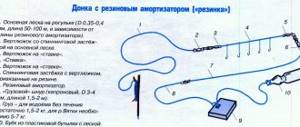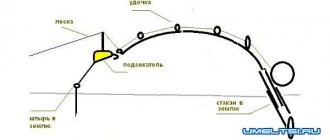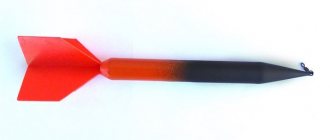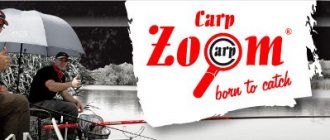TOP 17 ideas on what to give a fisherman and surprise him
What can you give to a fisherman who has everything? Let's try to approach it from the other side and make a list of “asymmetrical” gifts.
- Portable battery or power bank. This is a necessary thing in nature - there is no time to charge (sometimes if the car is not started and there is nowhere), to recharge a smartphone, phone, flashlight, tablet.
- A phone with large buttons, in a rubber, waterproof and anti-shock case, with a SIM card, the number of which is known only to a narrow circle of family, friends and relatives. Before fishing, pick up your main phone and give it a charged push-button phone, filled with the right music.
- An electric screwdriver with a set of standard bits for assembling a feeder chair, floor covers in a boat, and assembling a portable awning. Specialized stores will tell you that giving such a gift to a man who is a fisherman would be a good choice, especially if it comes with two lithium-ion batteries and a built-in LED.
- A thermos with a spring-loaded lid that can be opened with one hand, without a screw-on glass. Even if you pour tea or coffee into a mug during the fishing ritual, then while you are driving before fishing, a thermos of this type will delight you with coffee brewed early in the morning.
- Feeder chair. Does your fisherman dad carry a pathetic folding chair without a backrest in his car? It's time to fix the situation. In the future, the chair will require the addition of body kits, which will make it easier to choose gifts for a less significant occasion - February 23 or Fisherman's Day.
- Attachments for the feeder chair - a wide variety of devices, shelves, supports, clamps, holders, tables and cup holders. The main thing is to make sure that they are not there yet, and the selected item will fit exactly this chair.
- A high-quality life jacket with pockets and loops will provide extra warmth in bad weather, serve as a seat cushion, or an additional lining for a sleeping bag. Its presence is checked by GIMS, and even if there is already one in the boat, an additional one will not hurt.
- Gift edition of books by Leonid Sabaneev about fishing.
- Portable radio stations, if it is known that they are fishing in a group, with access to the water by boat.
- A heated cover for a seat, powered by a 12-volt vehicle network. Cars are often parked close to the water's edge, men fish while sitting in a chair, sometimes using the raised trunk lid of a jeep as a roof. A small extension cord, and you will be repeatedly remembered with a kind word for the warmth you provided.
- An echo sounder for determining the bottom topography and searching for favorite fish habitats.
- An electric or gasoline outboard motor for a fisherman who owns a boat with a transom board. Be sure to find out the make and model of the boat, and find information about the permissible engine power. Remember that a motor with a power of more than 8 kW (9.9 hp) will require registration with GIMS, and accompanying documents, including cash receipts, will also need to be given to the recipient of the gift.
- For a fisherman with a boat on a car trailer, a custom-made, tight-fitting shipping cover for the boat or motor.
- A canister for gasoline, the strength of which allows it to be used as a stand or seat.
- Minigenerator 220 volt portable gasoline in a noise-reducing housing with the function of recharging car batteries and an additional 12 Volt output. It will provide power to heated covers for feeder chairs, charge dead batteries, provide lighting, heat a kettle without starting a fire, and serve outside of fishing.
- Good binoculars with a float strap.
- A strong tool box that is guaranteed not to leak in the rain, allows you to sit on it, and fits into the fisherman's car.
DIY spinning
Is it worth taking it? Despite all the variety of spinning rods available on our market at present, many avid spinning fishermen sooner or later face a situation where it can be difficult to choose gear with exactly the characteristics that would fully satisfy the “urgent demand”. Whether these are miscalculations of companies that produce and sell fishing equipment, or the excessive demands of individual fishermen, it is difficult to say, but the fact that such a problem exists is a fact.There are at least three ways to get out of this situation:
- search the offered assortment of ready-made fishing rods until you find exactly what you need;
- forget about your inflated claims to the object of desire and buy a “stick” with parameters that are closest to those that you would like to have;
- acquire a hand-assembled fishing rod, either by ordering its assembly by a master, or by doing it yourself.
The last of the listed options and, at first glance, the most extravagant - self-assembly - is actually not something out of the ordinary. Of course, you will have to get some additional information, and a somewhat more thoughtful attitude to the subject than just “take it and catch it” will be needed, but nothing inaccessible to the understanding of a person with a secondary education will be required. There would be a desire. By the way, in the USA, this type of fishing-related leisure time as “rodbuilding”, that is, assembling rods, is so popular that, for example, the situation when a grandfather, instead of buying a rod for his grandson as a gift in a store, assembles it himself, does not surprise anyone.
Nevertheless, probably, the first question that any practical person will have is - is the game worth the candle? Does it make sense to spend quite a lot of time on this activity, which is always not enough? Will a self-assembled fishing rod outweigh the costs of 'stolen' leisure time? These questions are quite appropriate, but, as often happens, there are no clear answers to them. There are only certain pros and cons. It makes sense to take them into account before deciding to assemble your first fishing rod.
'Against'
- The first and biggest trouble that awaits a novice assembler is problems with purchasing the necessary components. The harsh reality is that even if you go shopping, it is impossible to buy everything you need. For example, threads specifically designed for these purposes are simply not sold here. You can, in principle, get by with “non-special” ones, but this is also not easy. With blanks, that is, “naked” rods not equipped with anything, the situation is no better - they are not for sale. True, it is quite possible to order and receive products from at least two manufacturers within 2-3 months - the American Talon and the New Zealand Composite Developments, but still our choice is not nearly as wide as that of American buyers. To be fair, it is worth noting that, for example, in Europe, things in this regard are not much better than in Russia.
- A rod assembled independently, even with the most favorable result, will not be many times better than a factory rod in some basic parameters, that is, say, it will not throw the bait 2 times further. Another thing is that in the nuances it can significantly “outplay” its brother assembled “on stream”, but more on that later.3. Finally, costs. Both temporary and material. Over time, everything seems to become clear, but the material side of the issue, I suspect, plays an important role for many. Probably, in some cases you can save money through self-assembly, but, in my deep conviction, starting to do this for purely commercial reasons is far from the best motivation, and the time spent, in fact, is worth quite a bit, although not always so an investment can be valued in money. Still, the approach where the desire to obtain as a result a unique tackle that best meets the requirements of its creator and owner is put at the forefront, seems much more correct.
And yet everything is not so hopeless.
'Behind'
- Anything that cannot be purchased here can be ordered abroad. Thank God, the Internet is working properly, the mail seems to be working as well, and plastic cards Visa, Master Card and the like are no longer rare wonders in the vast expanses of our vast country. There are, however, some difficulties. For example, a 2-legged form over 6 1/2 feet long can only be delivered from the USA by an expensive courier service such as UPS or Fed Ex. But the choice of any small details available to order is very large, which allows even using the form of a well-known company in our country to assemble a fishing rod that is significantly different from a “serial” one with the same form. Here, by the way, are several Internet addresses of companies that produce high-quality spinning forms; some of these companies also produce finished rods. Their products have never been introduced to our market, but let's hope it's just 'for now': www.shikariblanks.com www.batsonenterprises.com www.ctsfishing.com www.roguerods.com www.allstarrods.com
- Details such as the number, size and type of rings can change the feel of the stick very, very significantly. I had to compare a casting, or, as we call them, 'mult' rod from Daiwa in its 'original' form and after replacing the rings on it and arranging them using the spiral method - aka acid, aka revolver - wrap. With this type of arrangement, the first ring is placed as usual on top of the blank, then several rings form a spiral causing the line to change its path from 'above the blank' to 'under the blank', and finally the last rings and tulip are positioned as on a normal ' meat grinder spinning rod. So, if I happened to hold this rod in my hands “blindly” before and after the alteration, I would never say that it is the same “stick”. Simply due to the fact that the spiral arrangement, in addition to some other nuances, allows the use of significantly lighter “one-legged” guides in the upper part, the top of the blank is noticeably unloaded and the work of the rod becomes less inert, which is very, very noticeable even to a very subjective “shock” .
- An individual approach to assembling a spinning rod allows you to use the 'reel-rod' pair as efficiently as possible, since the rings are not arranged according to some 'universal', and therefore very average calculations, or, as they are also called, 'ring maps', used in factory production . Individual assembly allows you to take into account the diameter of the spool and the angle of inclination in relation to the blank of exactly the reel that is supposed to be used with the fishing rod in the future. By the way, this approach is one of the means of increasing the casting distance, although, as already mentioned, not significantly.
- It is also important that greater certainty than exists with the manufacturer of ready-made fishing rods regarding the type and diameter of lines that will be subsequently used with the fishing rod, allows you to achieve maximum efficiency of the blank without overloading it with unnecessarily heavy rings.
- Finally, with a 'piece' assembly, the owner's special preferences can be taken into account. It’s no secret that we are all very different, and preferences even, for example, in the method and location of the fishing rod gripping point may differ from person to person. There is no need to talk about the size of the hand and palm.
These are, briefly, the 'pros' and 'cons'. There are actually many more different subtleties than were listed, but I hope that the main ones are highlighted correctly enough. And finally. If the mentioned arguments 'against' did not cause a desperately pessimistic mood, and the theses 'for' aroused at least some interest in such an activity, which is still quite exotic in our country, like rodbuilding, then talk to people who, to one degree or another, You can always join it on the Internet, in specialized forums on the websites www.vlasenko.ru and www.spin-review.ru
What to give to a fisherman?
So, look what a miracle you can make with your own hands - a bottle of vodka in a fisherman's outfit










